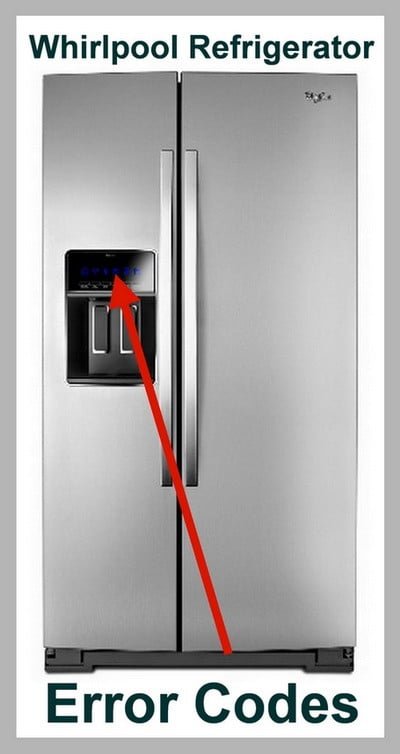
Now, you might be wondering, “Can I just reset the fridge and call it a day?” It’s a natural question. After all, in today’s tech-driven world, a reset is often the magical fix for everything from your Wi-Fi router to your smartphone. But with appliances like refrigerators, especially ones as complex as those from Whirlpool, it’s important to dig a bit deeper. Sometimes a reset is all it needs, but other times, it’s just the start of finding a more detailed solution.
Understanding the F1 Error Code
The F1 error code on a Whirlpool refrigerator might initially seem cryptic, but let’s break it down into simpler terms. Think of the F1 code as the refrigerator’s SOS signal. It’s alerting you to an issue, which often relates to the control board of the appliance. The control board is like the brain of your fridge—it manages all the cooling processes and ensures everything runs smoothly.
When the control board encounters a problem, it triggers the F1 error to grab your attention. This could be due to a glitch, a faulty sensor, or even a power surge. Imagine the control board as a sort of conductor for an orchestra; if it’s out of tune, the whole performance—your fridge’s functions—might falter. That’s why understanding the root cause of the F1 error is important before deciding if resetting is the right path.
You might find it helpful to think of the F1 error as a warning light rather than a full stop. It tells you there’s something to check out, but it doesn’t necessarily mean there’s a serious malfunction. However, it’s essential to treat the warning seriously and take the right steps to address it.
The Resetting Process Explained
So, what does resetting actually involve? Imagine your refrigerator as your home computer. When it’s acting up, you probably start by rebooting it to clear any temporary glitches. Resetting your Whirlpool refrigerator follows a similar logic. It involves turning off the power to the appliance for a short period, then turning it back on, with the aim of clearing out any electronic hiccups.
To reset your Whirlpool refrigerator, you’ll need to locate its power source. This typically means unplugging it from the wall socket. Wait for about five to ten minutes—akin to giving it a short nap—before plugging it back in. This downtime allows the system to settle, and once power is restored, the control board can reboot and potentially resolve the issue.
However, here’s the kicker: while resetting can sometimes clear the F1 error code, it’s not a guaranteed solution. Imagine turning off a beeping smoke detector without actually checking for smoke. It might stop the noise, but it doesn’t fix the underlying cause. If the code reappears after resetting, it’s a signal that further investigation is needed.
When Resetting Isn’t Enough
What happens if resetting doesn’t work, and the F1 error pops back up? This could indicate a deeper issue with the control board or other components, like sensors or wiring. It’s like if a light in your house keeps flickering; replacing the bulb might fix it temporarily, but faulty wiring needs more comprehensive attention.
In such cases, consulting your refrigerator’s manual or reaching out to Whirlpool customer service could provide guidance on the next steps. They might suggest checking for common issues such as blockages, dirt buildup around sensors, or faulty connections—all of which can be addressed with a bit of troubleshooting.
Sometimes, the control board might need a replacement, especially if it’s been damaged over time. While this sounds daunting, think of it like replacing a part in your car. It might require professional help, but it’s a path to restoring the fridge’s full functionality.
Preventive Measures and Final Thoughts
To avoid the F1 error popping up unexpectedly, regular maintenance can be your best friend. Regularly cleaning coils and ensuring that airflow around your fridge is unobstructed can prevent many common issues. It’s like routine dental check-ups; a little attention now can prevent major headaches later.
Also, consider using a surge protector for your fridge to protect it from power spikes. Power surges are like unexpected bumps on the road; they can jolt your appliances and lead to malfunctions. By safeguarding your refrigerator with a surge protector, you’re providing it with a smoother, more stable operating environment.
In the grand scheme of things, understanding and addressing the F1 error code is about more than just pushing a reset button. It’s about listening to what your refrigerator is trying to tell you, taking the necessary steps to ensure it’s in top shape, and reaching out for help when needed. So, while a reset can be a quick fix, staying attuned to your fridge’s needs is the key to a long, cool relationship.
